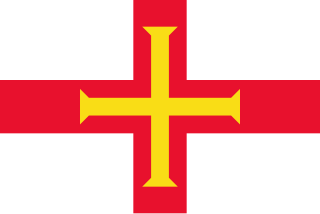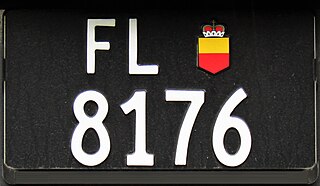
The Channel Islands are an archipelago in the English Channel, off the French coast of Normandy. They are divided into two Crown Dependencies: the Bailiwick of Jersey, which is the largest of the islands; and the Bailiwick of Guernsey, consisting of Guernsey, Alderney, Sark, Herm and some smaller islands. Historically, they are the remnants of the Duchy of Normandy. Although they are not part of the United Kingdom, the UK is responsible for the defence and international relations of the islands as it is for the other Crown Dependency, the Isle of Man, and the British Overseas Territories. The Crown Dependencies are neither members of the Commonwealth of Nations, nor part of the European Union. They have a total population of about 171,916, and the bailiwicks' capitals, Saint Helier and Saint Peter Port, have populations of 33,500 and 18,207 respectively.

Sark is an island, part of the Channel Islands in the southwestern English Channel, off the coast of Normandy, France. It is a royal fief, which forms part of the Bailiwick of Guernsey, with its own set of laws based on Norman law and its own parliament. It has a population of about 500. Sark has an area of 2.10 square miles (5.44 km2). Little Sark is a peninsula joined by a natural but high and very narrow isthmus to the rest of Sark Island.

A vehicle registration plate, also known as a number plate or license plate or licence plate, is a metal or plastic plate attached to a motor vehicle or trailer for official identification purposes. All countries require registration plates for road vehicles such as cars, trucks, and motorcycles. Whether they are required for other vehicles, such as bicycles, boats, or tractors, may vary by jurisdiction. The registration identifier is a numeric or alphanumeric ID that uniquely identifies the vehicle or vehicle owner within the issuing region's vehicle register. In some countries, the identifier is unique within the entire country, while in others it is unique within a state or province. Whether the identifier is associated with a vehicle or a person also varies by issuing agency. There are also electronic license plates.

The Bailiwick of Guernsey is a self-governing British Crown Dependency off the coast of Normandy, France, comprising several of the Channel Islands. It has a total land area of 78 square kilometres (30 sq mi) and an estimated total population of 67,334.

Guernsey elects a legislature at the national level. The islands of Alderney and Sark also elect their own parliaments.

All motorised vehicles plying on public roads in India are tagged with a registration or licence number. The vehicle registration plate is issued by a Regional Transport Office (RTO), the district-level authority on road matters in the respective state or Union Territory. The number plates are mandatory on both front and rear of the vehicle and are required to be in modern arabic numerals with latin letters. Complete specification of registration plates are specified under the HSRP: High Security Registration Plate rules.

A vehicle registration plate, also known as a number plate, license plate or licence plate, is a metal or plastic plate or plates attached to a motor vehicle or trailer for official identification purposes. The registration identifier is a numeric or alphanumeric code that uniquely identifies the vehicle within the issuing authority's database. In Europe most countries have adopted a format for registration plates that satisfies the requirements in the Vienna Convention on Road Traffic, which states that cross-border vehicles must display a distinguishing code for the country of registration on the rear of the vehicle. This sign may be an oval sticker placed separately from the registration plate, or may be incorporated into the plate. When the distinguishing sign is incorporated into the registration plate, it must also appear on the front plate of the vehicle, and may be supplemented with the flag or emblem of the national state, or the emblem of the regional economic integration organisation to which the country belongs. An example of such format is the common EU format, with the EU flag above the country code issued in EU member states.
In New Zealand, vehicle registration plates contain up to six alphanumeric characters, depending on the type of vehicle and the date of registration. To be operated on any public road, most types of motor vehicles and trailers must be registered and display the corresponding registration plate(s). One plate must be affixed to the rear of the vehicle, and except in the case of a motorcycle, moped, tractor, or trailer, a second plate must be affixed to the front of the vehicle.

The States of Guernsey, officially the States of Deliberation and sometimes referred to as the Government of Guernsey, is the parliament and government of the British Crown dependency of Guernsey. Some laws and ordinances approved by the States of Guernsey also apply to Alderney and Sark as "Bailiwick-wide legislation" with the consent of the governments of those islands. All enactments of the States of Guernsey apply to Herm as well as Guernsey, since Herm is directly administered by the Bailiwick of Guernsey.

Malaysian registration plates are displayed at the front and rear of all private and commercial motorised vehicles in Malaysia, as required by law. The issuing of the number plates is regulated and administered by the Malaysian Road Transport Department or JPJ.
Guernsey is the second largest of the Channel Islands. It is part of the Common Travel Area, allowing passport-free travel to and from the United Kingdom, Jersey, the Isle of Man or Ireland. Travel to the Schengen Area of Europe requires a passport or an EU national identity document and from 2025 entry to the Schengen Area will require compliance with the European Travel Information and Authorisation System (ETIAS) and non EU citizens may need a visa. Entry from the Schengen Area requires a passport, except when a concession is in place for short trips to Guernsey, when an EU ID card is acceptable.

Thailand's vehicle registration plates are issued by the Department of Land Transport (DLT) of the Ministry of Transport. They must be displayed on all motorized road vehicles, as required by the Motor Vehicle Act, B.E. 2522 and the Land Transport Act, B.E. 2522. The plates vary in design, colors and dimensions according to the type of vehicle, but usually display a registration number and the vehicle's province of registration. Specifications are given in Ministry of Transport regulations. Current style started in 1975 for most vehicle types, but with small changes in 1997, and 1997 for motorcycles.

Vehicle registration plates of Gibraltar are similar to those of the United Kingdom, with the same colours and typeface, similar to the common EU format. Vehicle registration plates, usually called 'number plates', include the international vehicle registration code for Gibraltar, 'GBZ'. GBG is used for Guernsey.

The following outline is provided as an overview of and topical guide to Guernsey:

Vehicle registration plates, commonly referred to as number plates, are the mandatory alphanumeric plates used to display the registration mark of a vehicle in Jersey. Vehicle registration marks are issued in Jersey by Driver and Vehicle Standards, a Government of Jersey department, and are entirely different from those issued in other jurisdictions.

Vehicle registration plates of the Principality of Liechtenstein are composed of the letters FL, followed by the small version of the coat of arms of Liechtenstein and up to five digits. The letters FL stand for Fürstentum Liechtenstein. Standard license plates show white characters on a black background, using the same type of font as Swiss license plates.
This page list topics related to the Bailiwick of Guernsey, including Guernsey, Alderney, Sark and smaller islands.
Vehicle registration plates are the alphanumeric plates used to display the registration mark of a vehicle, and have existed in the United Kingdom since 1904. It is compulsory for motor vehicles used on public roads to display vehicle registration plates, with the exception of vehicles of the reigning monarch used on official business.

The Bailiwick of Guernsey is a British Crown dependency in the English Channel off the coast of Normandy. As a bailiwick, Guernsey embraces not only all ten parishes on the island of Guernsey, but also the islands of Alderney and Sark – each with their own parliament – and the smaller islands of Herm, Jethou and Lihou. Although its defence is the responsibility of the United Kingdom, the Bailiwick is not part of the United Kingdom, but, as its description suggests, a possession of the Crown. Consequently, though it lies within the Common Travel Area, it was never part of the European Union.
Same-sex marriage is legal in all parts of the Bailiwick of Guernsey, a Crown Dependency of the United Kingdom. Legislation to open marriage to same-sex couples in Guernsey was passed by the States of Guernsey on 21 September 2016, and took effect on 2 May 2017. Same-sex marriage laws took effect in Alderney on 14 June 2018, and Sark on 23 April 2020.

















